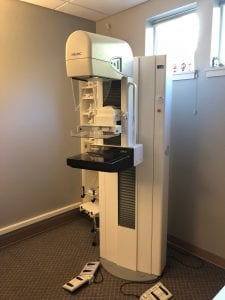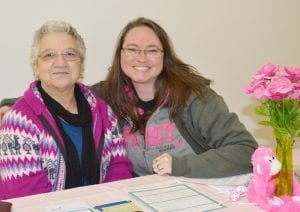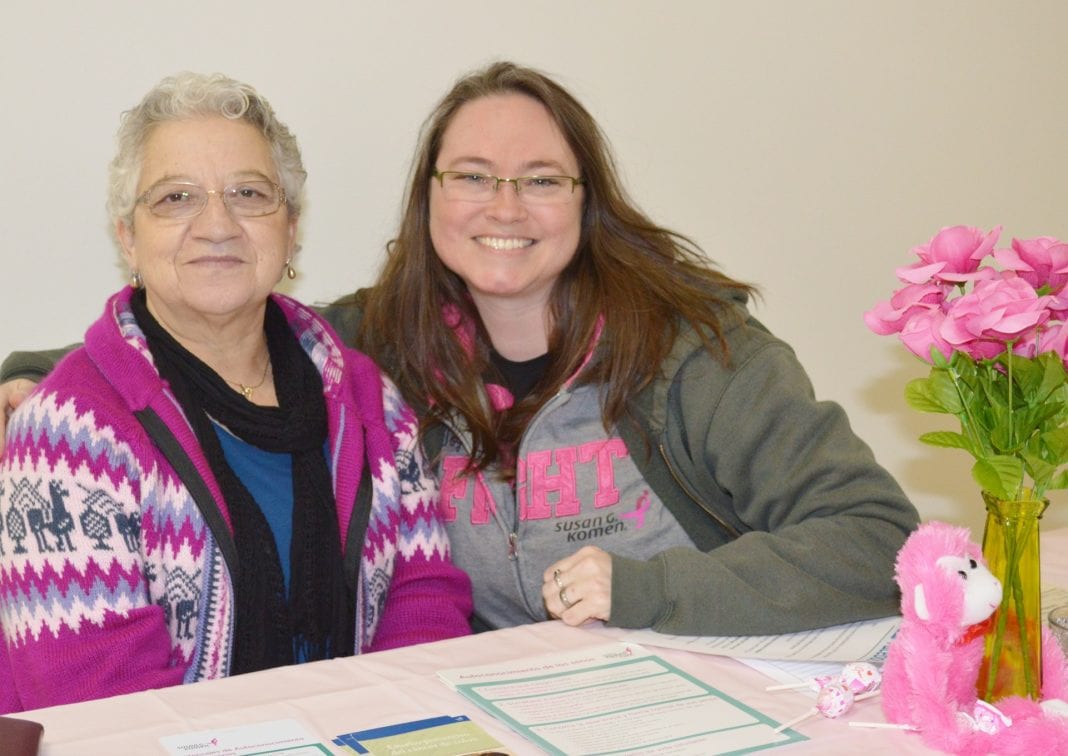I recently sat down with Dawn Heckathorn of Grays Harbor Imaging, a department of Grays Harbor Community Hospital for an enlightening discussion about breasts. “Women need to have more conversations like this,” says Heckathorn, a radiologic technician and Certified Patient Breast Navigator. “We don’t talk about breast cancer with our girls. We don’t talk about it with our girlfriends.”

Did you know, for instance, that according to statistics from the Susan G. Komen Foundation, Grays Harbor has the lowest breast cancer survival rate in all of Washington? We have all the services we need here in the Harbor, from imaging to surgery, radiation and chemotherapy. But women delay screening, and those delays cost lives.
Early Detection is Key
While self-breast examinations should form a part of every woman’s health routine from an early age, they are not enough. By the time a woman can feel a lump in her breast, the lump will be the size of a quarter. A mammogram, on the other hand, can detect breast cancer up to two years before you or your doctor can feel the mass.
According to the Komen Foundation, women who detect breast cancer in the early stages have a 99 percent 5-year survival rate. The critical factor is early detection. To that end, the National Comprehensive Cancer Network and the American Medical Association recommend that women receive mammograms every year, beginning at age 40.
For every 100 women who get a mammogram, the results for 90 of those women will be normal. For the 10 women asked to return for additional testing:
- six will receive a normal result.
- two will be asked to return for a follow-up exam in six months.
- and just 2 out of the 100 women screened will require a needle biopsy (which may or may not show cancer).
The earlier breast cancer is detected, the less aggressive the treatment will be. Treatment options have come a long way since my mother survived breast cancer a few decades ago. Mastectomy and chemotherapy are far from a foregone conclusion, particularly in early stage cancers.
Overcoming Misinformation with Education
A significant barrier to early detection of breast cancer is the lack of reliable information. For example, the United States Preventative Task Force published guidelines in 2016 recommending annual mammograms beginning at age 50. However, studies have shown that these guidelines would miss approximately one third of cancers.

“I’m finding many women in their 40s with breast cancer,” reports Heckathorn. “In the United States, one in every 69 women between the ages of 40 and 49 is diagnosed with breast cancer.”
The odds grow more daunting as women age. One out of every 38 women in their 50s is diagnosed with breast cancer. That number increases to 1 in 8 by the time women reach their 70s. Women are not powerless, however. Some healthy habits make a big difference. For instance,
- Maintain a healthy weight. Several studies have shown that overweight and obese women have a higher risk of breast cancer, particular after menopause. This is partially because fat cells make estrogen, which can make some types of breast cancers develop and grow.
- Get yearly mammograms after age 40. Pick a specific, memorable date each year (perhaps near your birthday) to help you remember to schedule your screening. This is your gift to yourself!
- Know the signs of breast cancer. Learn what breast cancer can look and feel like and do self-breast exams monthly. The Know Your Lemons web site is a great place to start educating yourself.
- Know the risks of hormone replacement therapy (HRT). Some studies have shown a link between certain types of hormone replacement therapies and breast cancer. Carefully research your options.
- Talk about it. Breasts and breast cancer should not be taboo topics. Talk about breast health with your daughters. Encourage your friends, your coworkers, your mother and your sisters to get yearly mammograms.

Breaking Down Financial Barriers
Many women delay screenings because they worry about the cost. If you have private insurance or Medicare, your insurance most likely covers screening mammograms at 100 percent for women 40 and older.
For women who are uninsured or underinsured, there are programs that may help you obtain low cost or free mammograms. In Washington State, the Breast, Cervical and Colon Health Program provides free breast screening based on income, age and insurance status.
Grays Harbor Community Hospital Imaging Department
The experienced team of certified mammography technologists at Grays Harbor Imaging can help take the fear out of the screening process. Grays Harbor Imaging, a department of Grays Harbor Community Hospital, is located at 1108 Basich Boulevard in Aberdeen. Call them today at 360-533-0400 to schedule your mammogram.
Sponsored











































